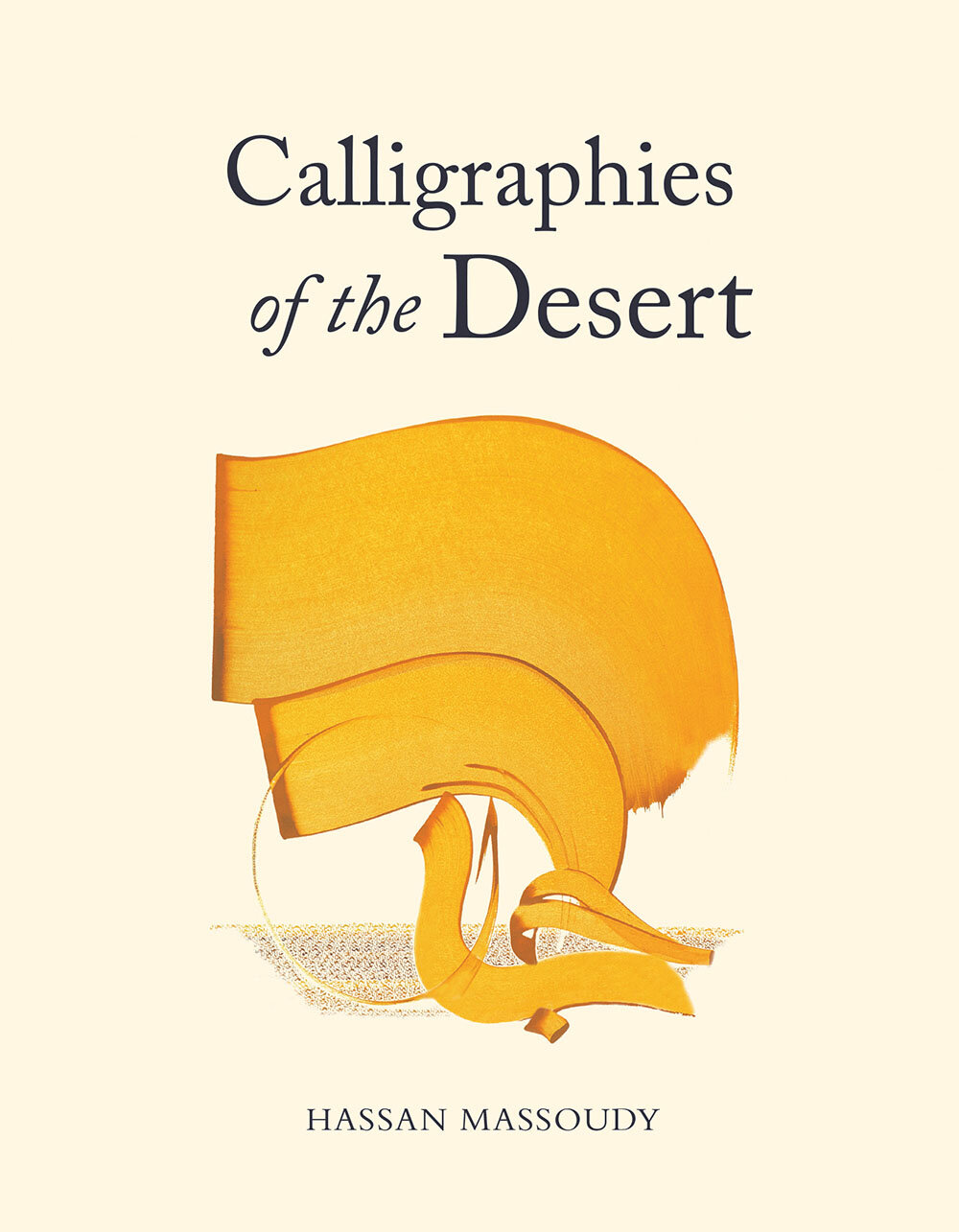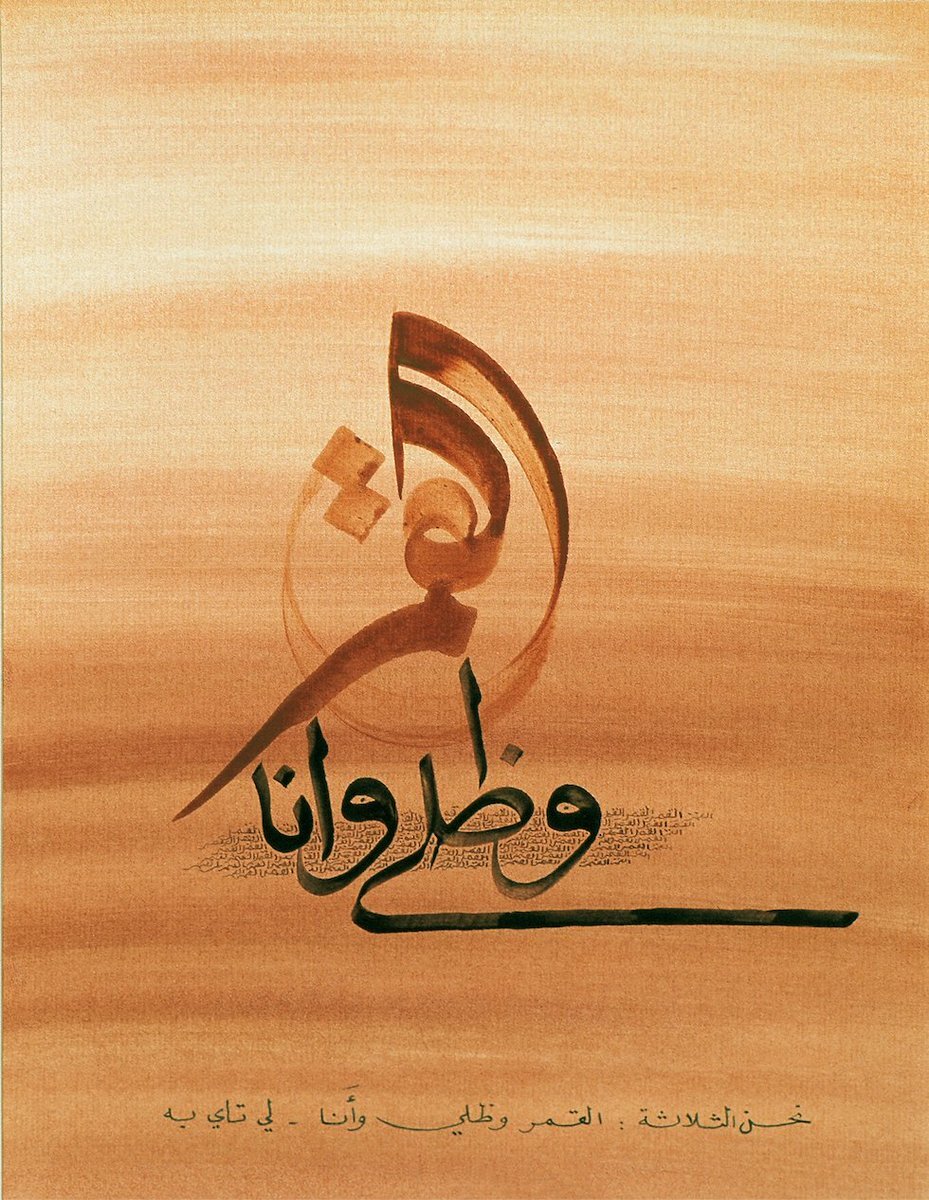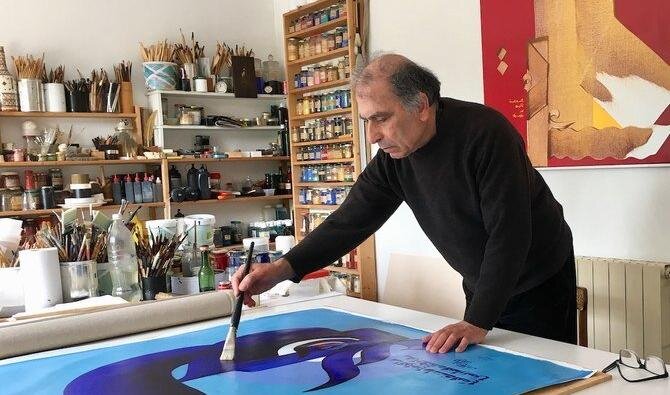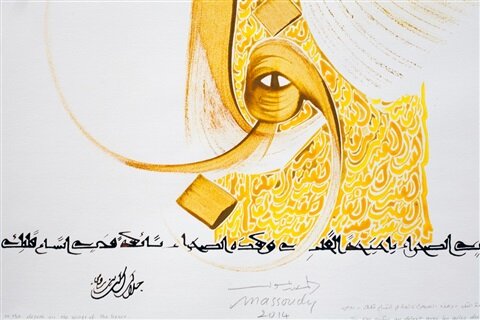Calligraphies of the Desert by Hassan Massoudy Saqi, the London-based imprint that specializes in titles from and about the Arab world has recently brought out a beautiful art book from Iraqi calligrapher and artist Hassan Massoudy. Calligraphies of the Desert is a celebration of some of the world’s harshest yet mystical landscapes. With masterful strokes of pen and brush, Massoudy takes you through the valleys and dunes of sand color hues, vibrant reds, and warm sienna browns. He paints a vivid picture with his wide range of calligraphic strokes, playful and charming, almost irresistibly pulling you into his thoughts and visions as his layouts come to life on the page. Descriptions of the desert fill the page with each stroke and the swirl of his pen, as he experiments with different pressure points of his ink to reveal a poetic image made of words. His layouts display a stark contrast between the wide range of strokes and the delicate poetry written on a smaller scale almost like a landscape that visualizes the sun, the dunes, the ripples in the sand, and the wind that passes by through this desert scene. From whence comes Massoudy’s intimacy with the desert landscape? He was born in the southern Iraqi town of Najef and as the artist relates in his biography, he grew up “amid the scalding heat of the desert, in a traditional Iraqi society characterized by strong religious beliefs, a high sense of solidarity and a keenness for festive gatherings. As youngster, in this town where all images were prohibited, he fulfilled his passion for art by making drawings and calligraphies while investing all his energy to get paper and pigments.” Accompanied by quotes and poems with each piece, in Calligraphies Massoudy brings to life the narrative tension between the strong desert culture celebrated in many Arab countries and our love of poetry and words. I was at times reminded of two of my favorite poets, Gibran and al-Mutunabbi as I reflected on Massoudy’s work, and remarked a harmonious marriage between his Japanese-inspired Arabic calligraphy style and the vividness and beauty of the quotes he illustrates with each different desert scene. Many poets and writers have used the desert as inspiration and as similes for a range of themes, such as love, the stars, the mysteriousness that lies in the desert, and the stillness and calm that brings inner peace to many. “In the lands of Hejaz When you come near, all the sun’s blaze Antara Ibn Chaddad (525-615) Massoudy would eventually migrate from Najef to Baghdad where he apprenticed with several calligraphers and visited exhibitions of modern art which fascinated him and set him to dreaming of the artist’s life. The unfolding political events and ensuing dictatorship led him to leave for France in 1969, freed from the oppressive regime but heartbroken. He wound up at the École des Beaux-Arts in Paris where he first worked on figurative painting. But he did not stop calligraphy altogether; to pay for his studies, he designed headlines in calligraphy for Arabic magazines. Over the years, calligraphy progressively got into his figurative painting and eventually took its place. As Massoudy explains, “The aesthetic, geometry and rhythms of the calligraphy are unveiled, the compositions are born. The dynamics of the gesture give birth to poetry.” Calligraphies of the Desert reveals an indigenous comfort with the desert as reflected in Arab proverbs heard in everyday conversations, for instance: “The dunes are changed by the wind, but the desert is always the desert.”
Texts by Isabelle Massoudy
Saqi 2020
ISBN: 9780863561771Maece Seirafi

Are the tents of my tribe
And I may not approach them.
In the tents of this people
Is a woman, ever-veiled,
But through her veil, her gaze speaks
Of love, of happiness, of despair, and of death.
When you walk, I seem to the cypress
Sway her supple branches
At the south wind’s gentle breath
When you walk away, it’s with the surefootedness
Of the shy gazelle whom the slightest
Drives into the desert.
Dazzles my eyes.
O Abla! In the depths of my despair
My love for you and all my weaknesses
Bring my only delight.

Calligraphies of the Desert

exc-5fe60bee1c123d7f84a533b3
